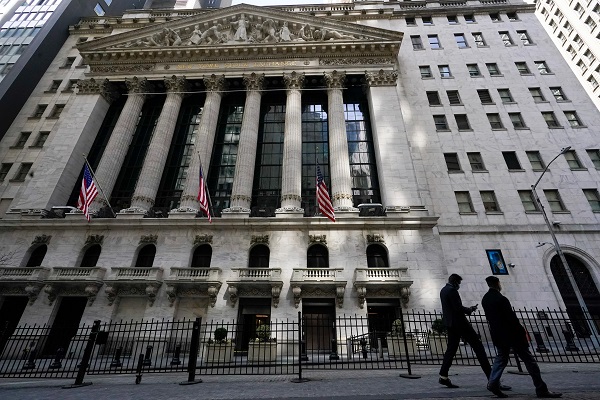The Biden Administration has introduced legislation to limit corporate buybacks, a fundamental practice in corporate America.
Stock buybacks refer to share repurchases. A buyback occurs when the issuing company reabsorbs that portion of its ownership that was previously distributed among public and private investors.
The theory behind reducing the number of shares — all things being equal — is that it increases earnings per share (EPS) on the remaining shares. This benefits the remaining shareholders.
Let me give you the rationale for buybacks. Think of a pizza redivided from eight slices to six. It is still the same size pizza, but each slice is bigger because there are fewer slices.
Under the proposed plan, corporate executives must retain company shares for three years after receiving them. Furthermore, they would be prohibited from selling shares for several years after a stock buyback. The plan is structured to prevent executives from making a quick profit from company shares that rally after a buyback.
The current administration believes that such legislation would align executives’ interest with the long-term interests of shareholders, workers and the economy. To cut to the chase, they want companies to invest in long-term growth and innovation and raise the compensation of their employees.
Buybacks have increased in recent years. Analysts expect that buybacks could top $1 trillion in 2022, a record. By contrast, according to S&P research, corporations bought back $500 million of their stock in 2017.
In 2021, S&P 500 companies spent $862 billion on buybacks compared with $511 billion for dividends.
Buybacks can also protect a company from a hostile takeover, or signal that the company plans on going private. With the yield on corporate cash investments slightly above 1 percent, the incentive to buy back stock is high.
Corporate buybacks have raised significant congressional criticism. They point out the trillions of dollars provided to corporations during the pandemic. They resent that such grants be used for buybacks.
To buttress their arguments, critics point out that buybacks represent an increasingly large share of corporate profits (often more than 50% of net income) in recent years.
According to a 2019 Goldman Sachs research report, S&P 500 companies used their cash for the following:
- 51% for capital expenditures, research and development, and corporate acquisitions, and
- 49% for buybacks and dividends.
Laurence Fink, chairman and CEO of BlackRock, the world’s largest asset manager, has been critical of buybacks. He wrote, “Too many companies have cut capital expenditures and even increased debt to boost dividends and increase share buybacks.”
A corporation has four choices to allocate cash: (1) make capital expenditures or invest in other ways, (2) pay cash dividends, (3) acquire another company or business unit, and (4) repurchase their own shares.
I am fortunate to have served on the boards of directors of several companies. We explicitly understood our responsibility to help a number of constituencies — the community, our employees and our shareholders.
That said, our No. 1 priority was providing profitably with the best possible product at the best price. Otherwise, we would lose our competitiveness and thus face bankruptcy — a prospect that served nobody’s interests, particularly given our exposure to director’s liability.
Since 1996, the number of public American companies has declined 50 percent for a variety of reasons — corporate takeovers, cost of complying with regulations, corporations moving overseas, and going private. America has robustly benefited from our thriving corporate culture. We need to ensure that the cost-benefit of regulation enhances capital formation.
Warren Buffett has made the following defense of buybacks: “I find it almost impossible to believe some of the arguments that are made that it’s terrible to repurchase shares from a partner if they want to get something, and you’re able to do it at prices advantageous to the people who are staying.”
Originally published in the Sarasota Herald-Tribune




